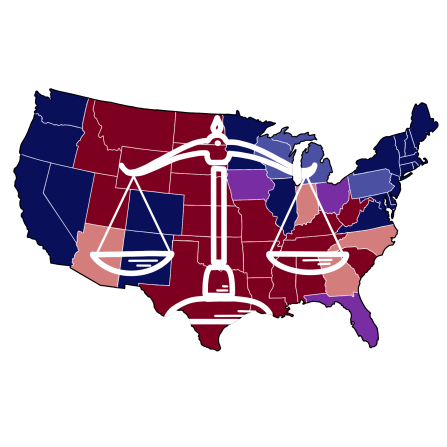Though we view the United States as a whole, labor laws vary from state to state, and many simply chalk these variances up to differences in political parties. Yet, labor laws in blue-dominated states do not necessarily trump those of the red ones. The upshot: no matter the political party, most states fall well short of offering workers the rights they need.
Take minimum wage for example. In New York, a traditionally blue state, workers must make a minimum of $14.20 per hour, while in Texas, a traditionally red state, the minimum wage is $7.25 an hour. The latter seems particularly low. Minimum wage workers in Texas make an average of $58 a day, with their salary totaling around $15,080 per year – well below MIT’s designated livable wage of $34,132.80 for a single adult without children in Texas. However, the situation in New York isn’t much better. A minimum wage worker there would make $29,536 a year, which is still far below the livable wage of $44,636.80. When taking into account living expenses, New York and Texas are not so different after all – both fail to provide the minimum to support their residents’ livelihoods.
Wages are not the only problem at hand for workers. Sick days are also an essential part of having a stable job, as anyone who caught Covid during the past three years knows well. In Texas, workers are not legally entitled to sick days and are not compensated for them. Surprisingly, this fact is true for workers in New York state as well and seems particularly problematic, considering the low wages and high living expenses that residents of the state face. The absence of paid leave forces workers to choose between staying home while sick or making enough money to get by – options that are impossible to pick between. Obviously, problems with workers’ rights are found in both Democratic and Republican states and go much deeper than political affiliation.
The common misconception of labor laws is that they are regulated better in blue states than in red states, but a simple comparison of New York and Texas quickly debunks this idea. The reason for this is that, most often, the cost of living is not taken into consideration when looking at a minimum wage. Even though we view New York as a very liberal state, the disparities between income and spending show that the state must do better to ensure that workers are treated fairly. Of course, that goes for Texas too.
Sources:
Living Wage Calculator - Living Wage Calculation for Texas. https://livingwage.mit.edu/states/48.
Living Wage Calculator - Living Wage Calculation for New York County, New York. https://livingwage.mit.edu/counties/36061.
Manager, Website. “New York Labor Law: The Ultimate Guide 2020.” Cilenti & Cooper - Overtime Lawyers in NY, 12 Jan. 2021 https://wagefirm.com/new-york-labor-law-the-ultimate-guide.
Homebase. “State Labor Law - Texas.” Homebase, 14 Jan. 2023 https://joinhomebase.com/state-labor-laws/texas/
Homebase. “State Labor Law - New York.” Homebase, 4 May 2022 https://joinhomebase.com/state-labor-laws/new-york/
Written by Eliška Levisohn
Edited by: Brian Yu, Mirabelle Jiang

 Inequalities in the AI industry
Inequalities in the AI industry